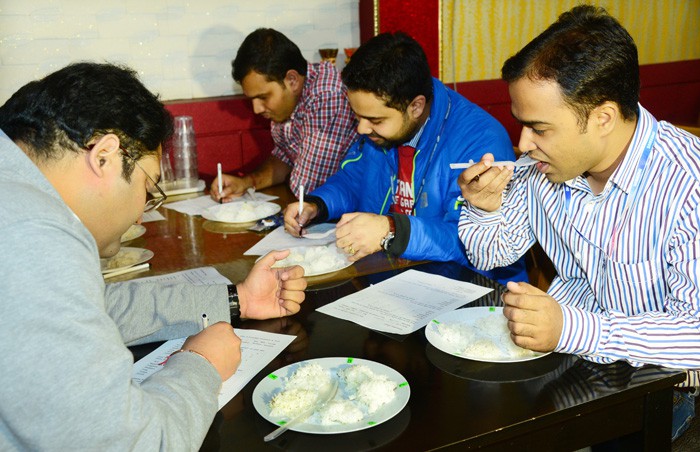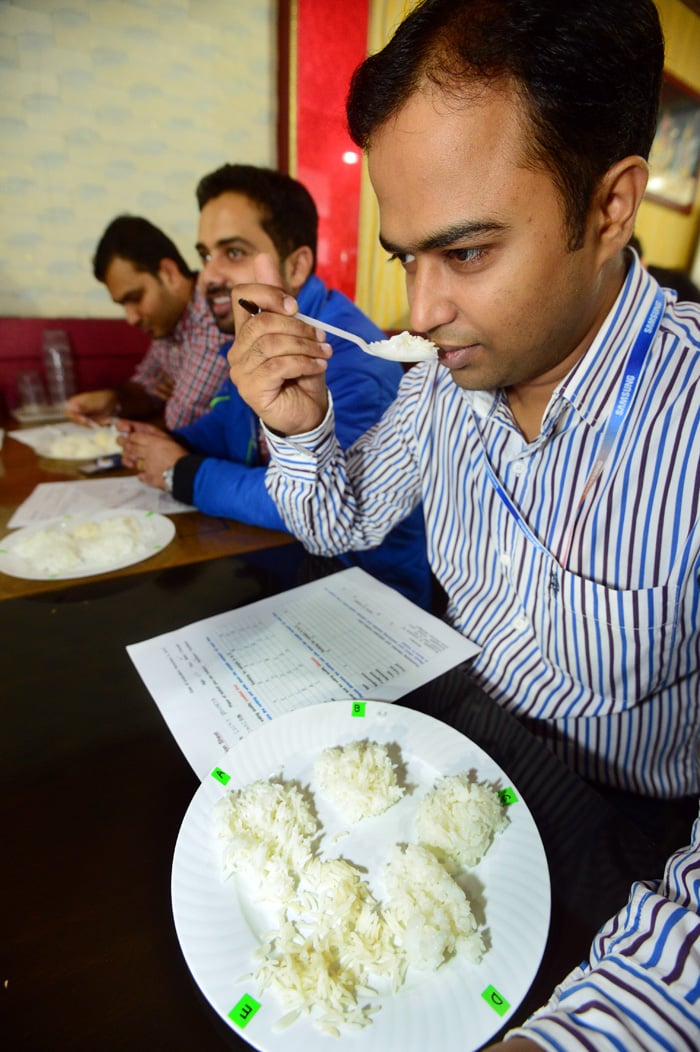First, they smelled it. Then they tasted a spoonful of it. Finally, they wrote down their comments on a sheet of paper.

The National Institute of Agricultural Science, part of the Rural Development Administration, holds a rice-tasting for its newly developed strain of aromatic basmati rice in Suwon on Nov. 9. The tasters generally gave good reviews to the new rice variety.
Five kinds of rice were tested: three new kinds of basmati rice, one kind of palbangmi rice, a Korean strain developed in 2012 mostly used to make rice noodles, and the traditional basmati rice that’s sold all over the world. Between 71 and 94 percent of reviewers said they would buy the newly developed basmati rice if it were available on the market, and that an acceptable price range would be between KRW 3,500 and KRW 4,500 per kilogram, which is relatively high considering the current price of standard Korean rice on the Korean market is less than KRW 3,000 per kilogram.
Basmati, meaning “fragrant” in Sanskrit, is a variety of aromatic rice often found in South Asian cuisine.
“This new strain of basmati rice is expected to expand Korean rice exports,” said the NIAS in a statement.
By Chang Iou-chung
Korea.net Staff Writer
Photos: Rural Development Administration
icchang@korea.kr


Tasters sample four strains of rice that have been newly-developed in Korea, and compare them with traditional basmati rice.























